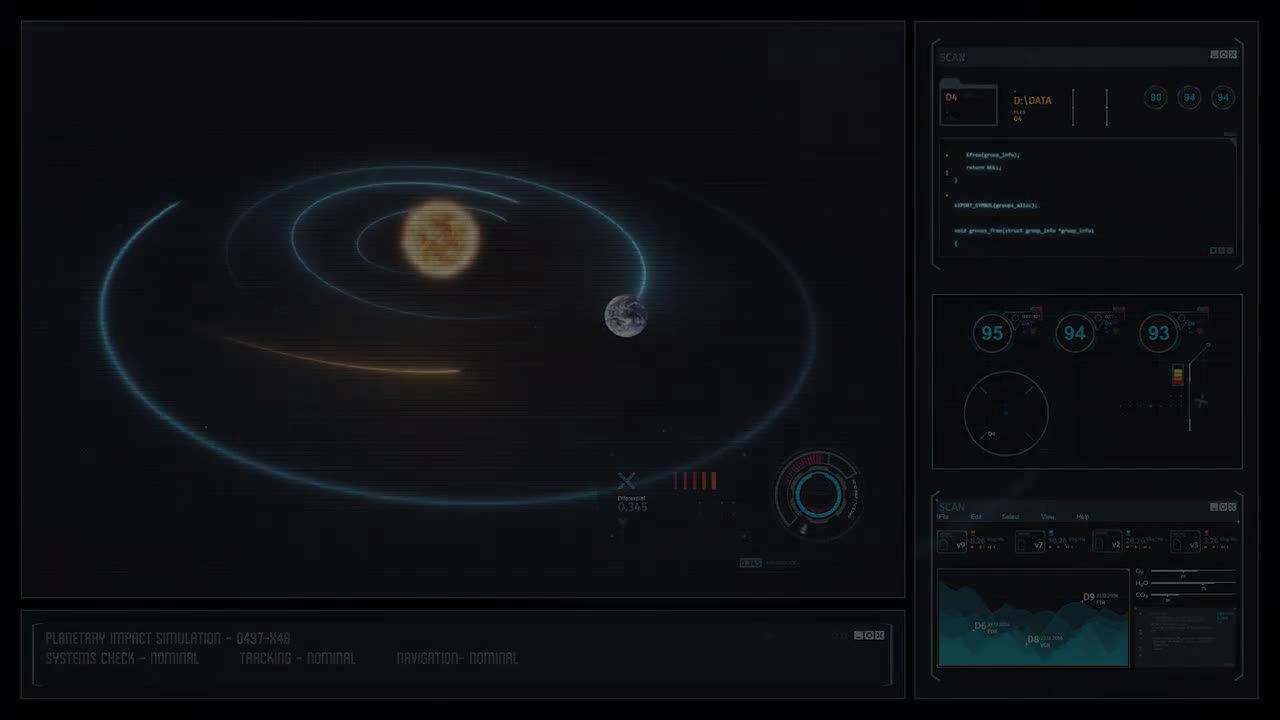Premium Only Content

How does the earth actually move through the galaxy?
When we think about the Earth's movement, our minds typically turn to its rotation on its axis and its orbit around the Sun. However, these are just parts of a much larger and more complex journey. The Earth, along with the entire Solar System, is moving through the Milky Way galaxy in a dynamic and fascinating manner.
Earth's Daily Rotation
Let's start with the most familiar motion: the Earth's rotation on its axis. This rotation takes approximately 24 hours, giving us the cycle of day and night. The axis of this rotation is tilted at an angle of about 23.5 degrees relative to the plane of its orbit around the Sun. This tilt is responsible for the changing seasons as the Earth orbits the Sun.
Earth's Orbit Around the Sun
The next layer of Earth's motion is its orbit around the Sun. This journey takes about 365.25 days, forming the basis of our calendar year. The Earth's orbit is not a perfect circle but an ellipse, meaning that the distance between the Earth and the Sun varies slightly throughout the year. This elliptical orbit, combined with the axial tilt, results in the varying lengths of days and seasons.
The Solar System's Journey Through the Milky Way
Beyond the Earth's orbit around the Sun, the entire Solar System is in motion. Our Solar System is situated in one of the spiral arms of the Milky Way galaxy, specifically the Orion Arm. The Milky Way is a barred spiral galaxy with a diameter of about 100,000 light-years, containing hundreds of billions of stars. Our Solar System orbits the center of the Milky Way at an average distance of about 27,000 light-years from the galactic center.
Galactic Orbit
The Solar System takes approximately 225 to 250 million years to complete one orbit around the galactic center. This period is known as a "galactic year" or "cosmic year." During this orbit, the Solar System moves at an average velocity of about 828,000 kilometers per hour (514,000 miles per hour). Despite this incredible speed, the vast distances in space mean that this orbit is a slow and gradual process on a human timescale.
The Milky Way's Motion
The movement of the Solar System within the Milky Way is just part of a larger picture. The Milky Way galaxy itself is also in motion. Our galaxy is part of a group of galaxies known as the Local Group, which includes the Andromeda Galaxy, the Triangulum Galaxy, and about 54 other smaller galaxies. The Milky Way and Andromeda are moving towards each other and are expected to collide and merge in about 4.5 billion years.
Gravitational Perturbations
The Solar System's motion through the Milky Way is not smooth; it is subject to gravitational perturbations from nearby stars and other massive objects. These perturbations can cause changes in the orbits of comets and asteroids in the Solar System, occasionally sending them towards the inner Solar System where they might collide with Earth. Such impacts have played a significant role in Earth's history, including contributing to mass extinctions.
The Laniakea Supercluster
Recent discoveries have revealed that the Virgo Supercluster is itself part of an even larger structure called the Laniakea Supercluster. This supercluster encompasses hundreds of thousands of galaxies and spans over 500 million light-years.
Dark Matter and Galactic Motion
The motion of galaxies, including the Milky Way, is also influenced by dark matter. Dark matter is an invisible form of matter that makes up about 27% of the universe's mass-energy content. It doesn't emit, absorb, or reflect light, making it detectable only through its gravitational effects. Dark matter creates additional gravitational forces that affect the movement of galaxies and galaxy clusters, playing a crucial role in the overall dynamics of the cosmos.
The Earth's movement through the galaxy is a complex, multi-layered journey that involves interactions on scales from the solar system to the cosmic web. From its daily rotation to its orbit around the Sun, and from the Solar System's orbit around the Milky Way to the motion of the entire galaxy through the universe, our planet is part of a grand cosmic dance.
-
 LIVE
LIVE
SOLTEKGG
2 hours agoLIVE - NOT LOSING A MATCH - NEW PC - !pc
197 watching -
 LIVE
LIVE
ThatStarWarsGirl
2 hours agoTSWG LIVE: Stargate Is BACK! EFAPing Michael Shanks Interview with GUEST!!!
178 watching -
 LIVE
LIVE
MissesMaam
3 hours agoStardew Co-Op 💚✨
55 watching -
 1:32:46
1:32:46
Glenn Greenwald
5 hours agoHillary Blames TikTok for Anti-Israel Sentiment; MAGA Sycophants Gain Pentagon Press Access; Who Should Win Anti-Semite of the Year? See the Top 10 Finalists | SYSTEM UPDATE #552
97.8K83 -

Flyover Conservatives
21 hours ago100% Chance the Grid Fails: Why No One Is Fixing It (and How Easy It Is) - Tommy Waller | FOC Show
11.9K4 -
 LIVE
LIVE
JDubGameN
3 hours agoStarlink Network Test Stream! | Road to 100 Followers
171 watching -
 2:17:31
2:17:31
The Daily Signal
6 hours ago $0.21 earned🚨BREAKING: Tennessee Congressional Election Results, Minneapolis Police to "Intervene" Against ICE,
16.8K6 -

megimu32
2 hours agoON THE SUBJECT: Christmas Vacation Is UNTOUCHABLE!
9.99K6 -
 59:56
59:56
Sarah Westall
3 hours agoNeurostrike, Cognitive Targeting & the New Tech Arms Race w/ Professor Armin Krishnan
9.77K -
 2:52:28
2:52:28
Nikko Ortiz
5 hours agoNo More Gear Fear... | Rumble LIVE
18.6K1